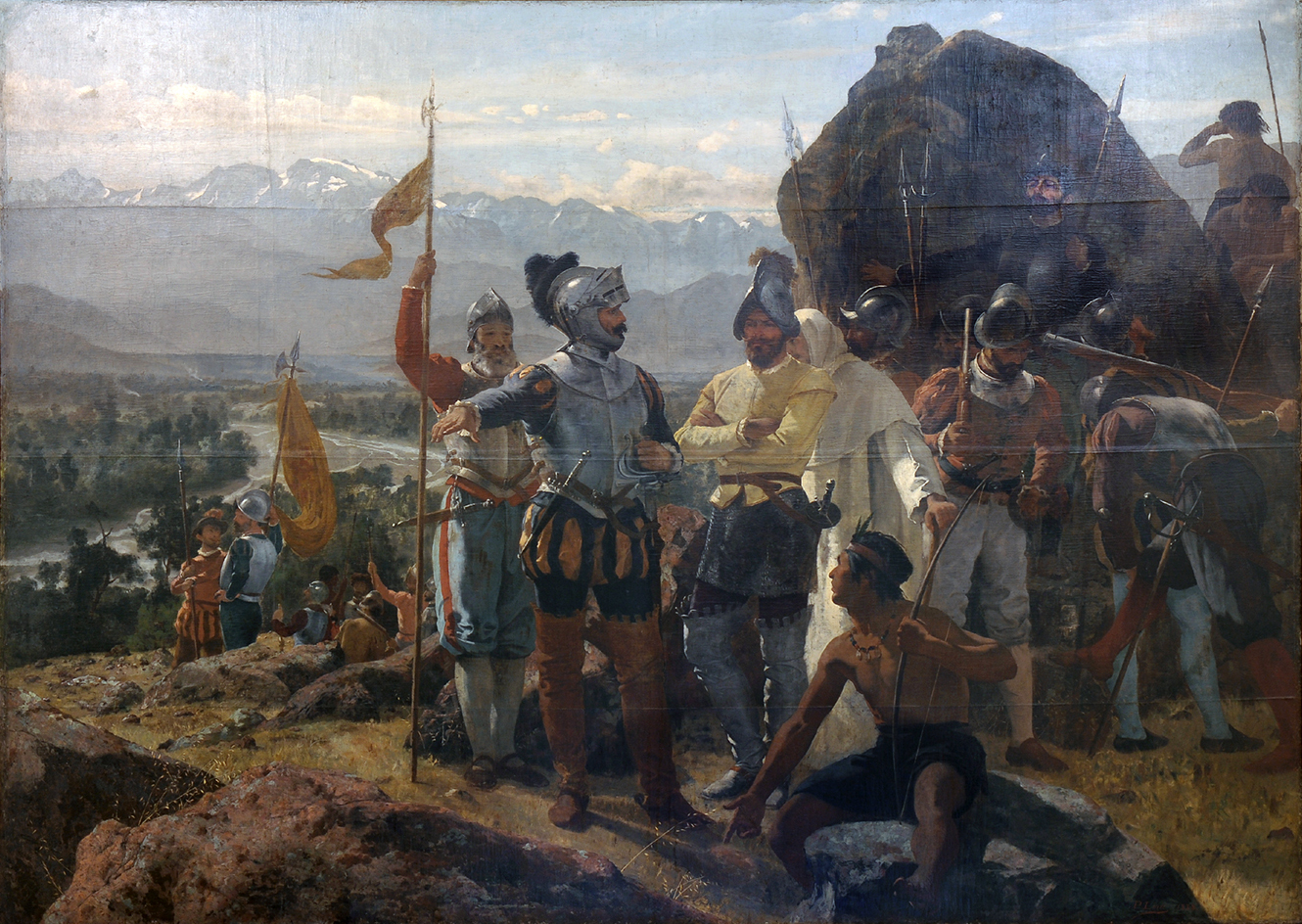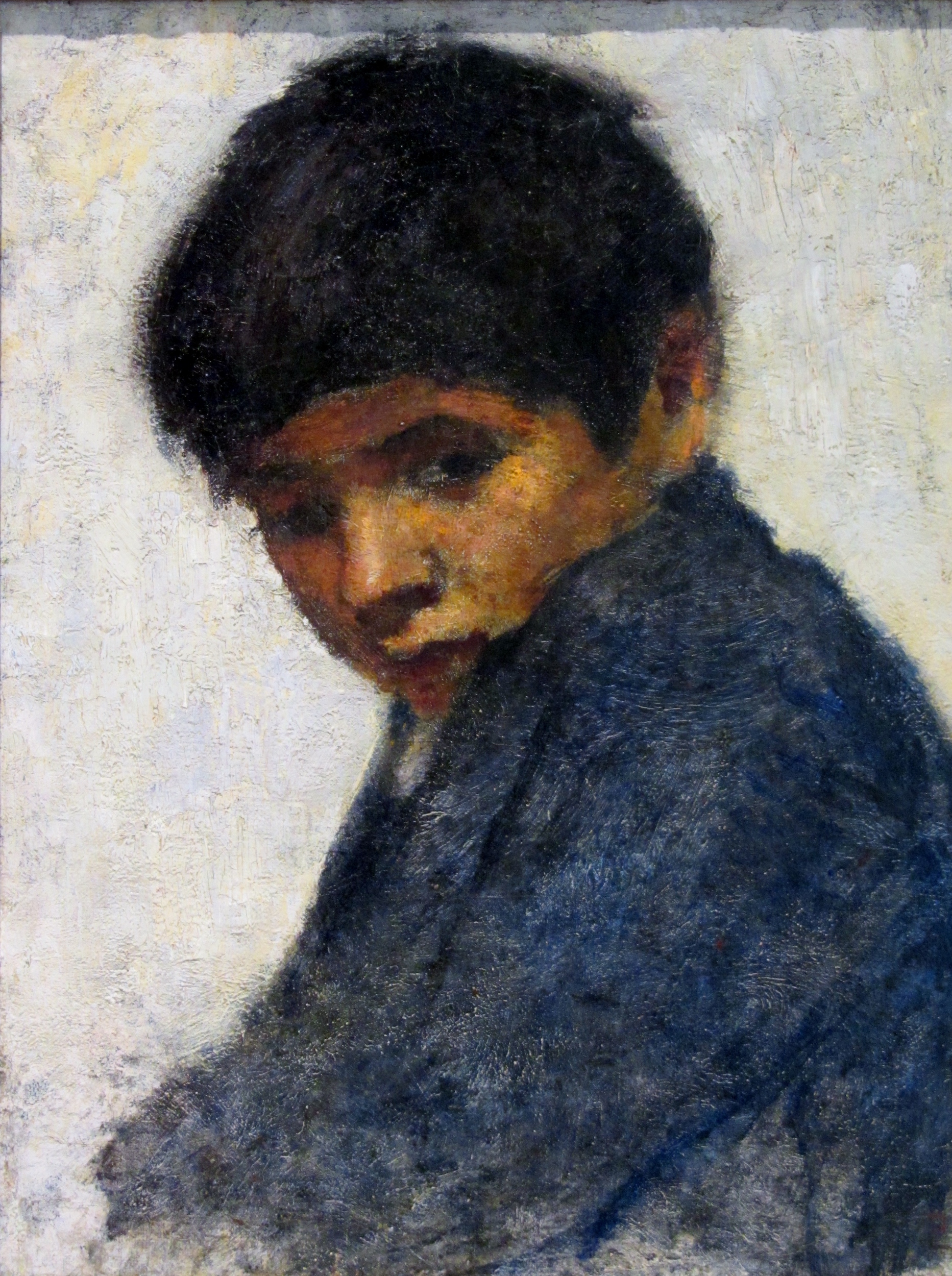Pedro Lira was a Chilean painter who had the most influence on development of national art during 19th century. He is one of the four great masters of Chilean painting; all of them had extended their education in France, but after coming back to Chile, Lira was the one who made the most of his art education, being a director of School for Fine Arts and a founder of Chilean National Museum of Fine Arts.
Foundation of Santiago is 2.5 x 4 meters (98.5 x 157.5 inches). Right in the center of the painting is the sword hand of Pedro de Valdivia, a Spanish conquistador and a founder of the city of Santiago on 12 February 1541. In the bottom center of the painting is a local man named Huelén Huala, with his hand pointing to the ground as the foundation place—Santa Lucia Hill, a current tourist attraction in the city center. You can see the Mapocho River and Chilean Andes in the background; there are two other indigenous people in the top right side watching over the place. The indigenous people are represented in poorer conditions and less quantity in comparison with the Spanish people; the hand gesture under the feet of Pedro de Valdivia represents a servant position.
A mistic figure, dressed in a light mantle, hiding behind Francisco de Villagra, has a religious representation, although without any symbols (no cross or flag). In the preliminary painting, Lira painted this figure in its full profile, with a feminine face that was recognized as Inés de Suárez, a life companion of Pedro de Valdivia. A soldier’s head in a helmet right behind her, as if a mirror reflection, represents her spirit as a woman warrior, accompanying Pedro de Valdivia in this important occasion.
- Evgenija Ivanova
P.S. Art and politics have always been closely interrelated. Read here about paintings for our uncertain times.


 Pedro Lira
Pedro Lira